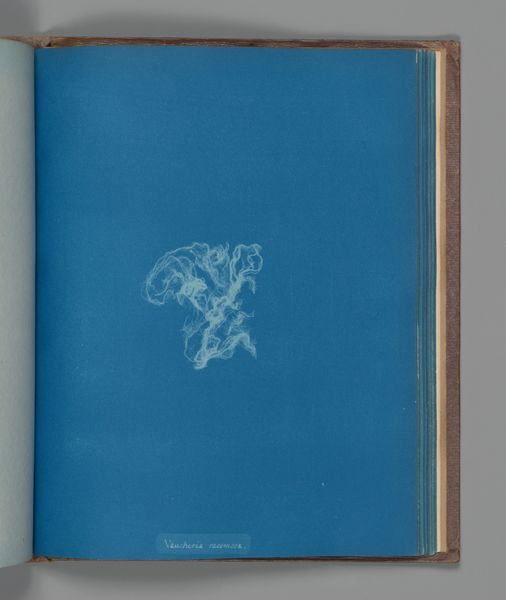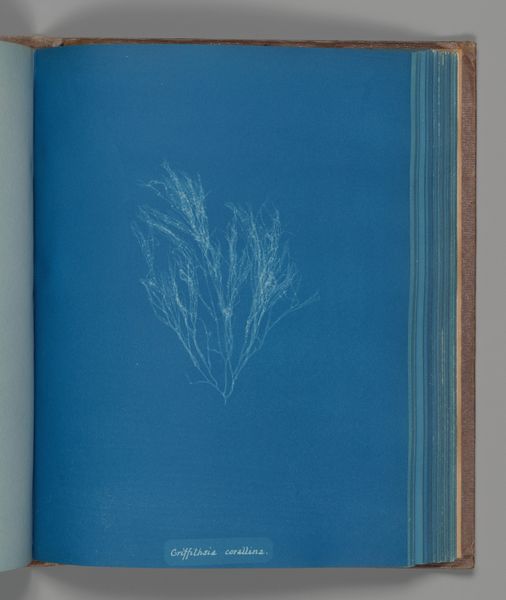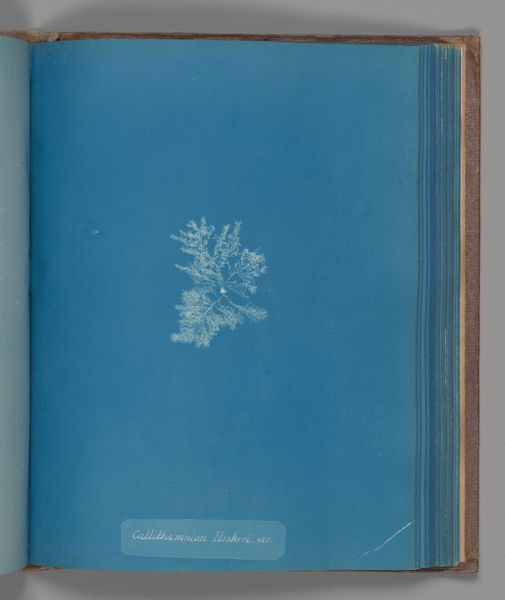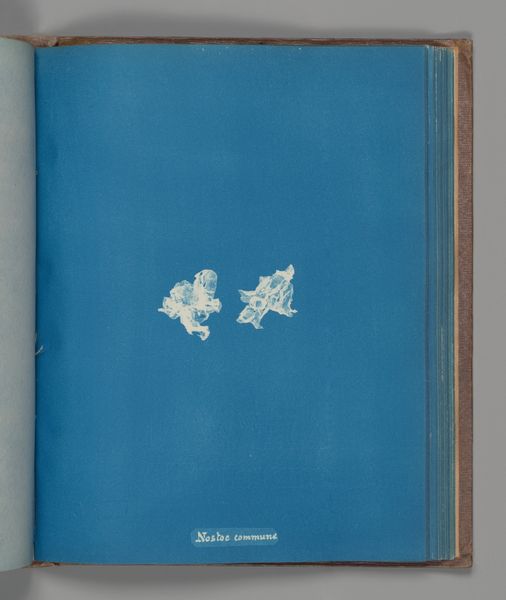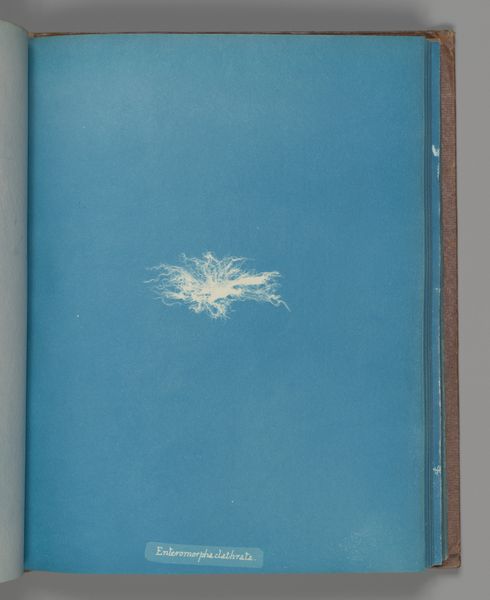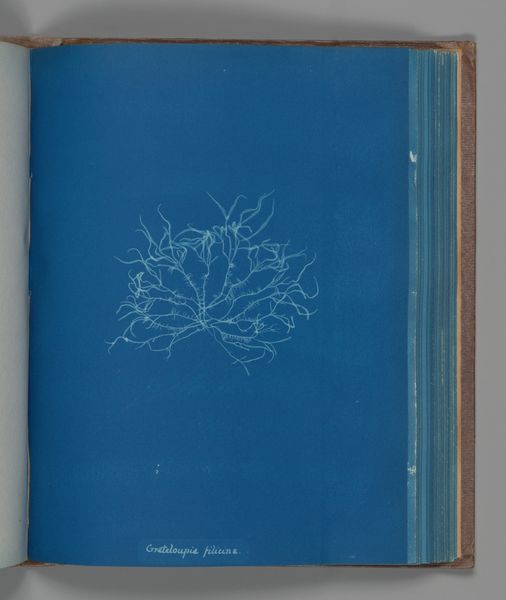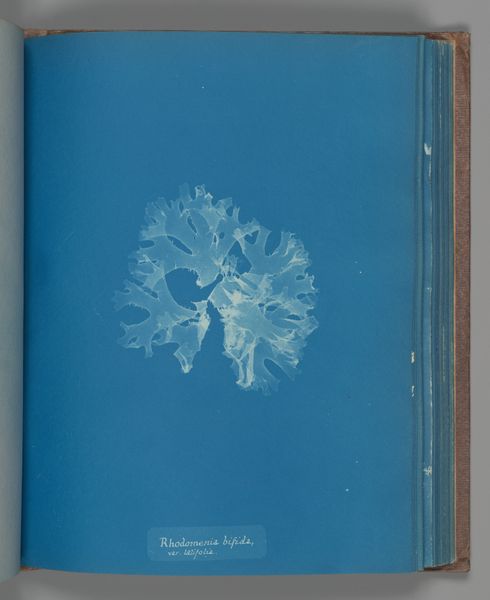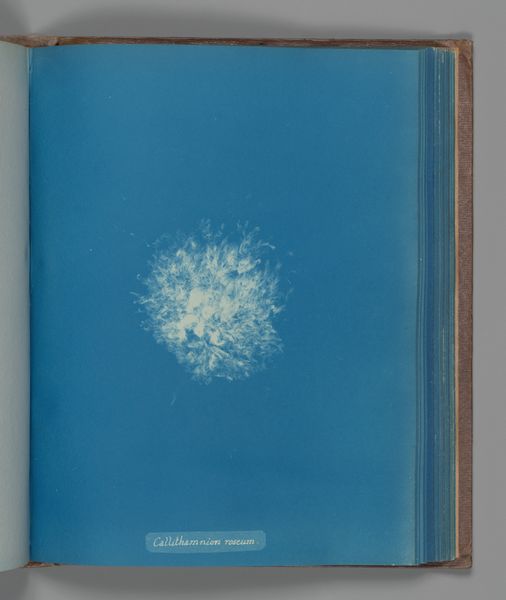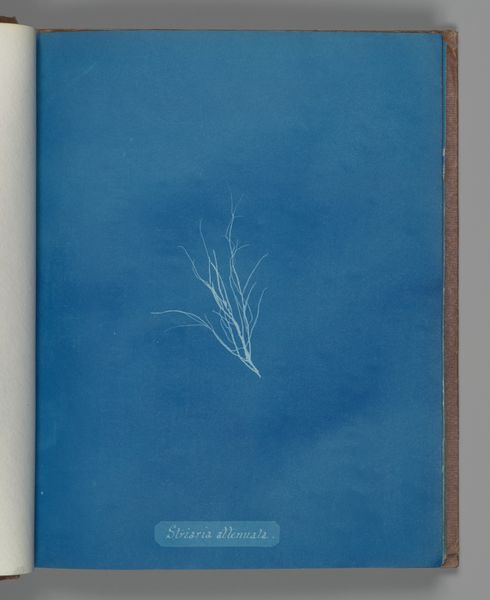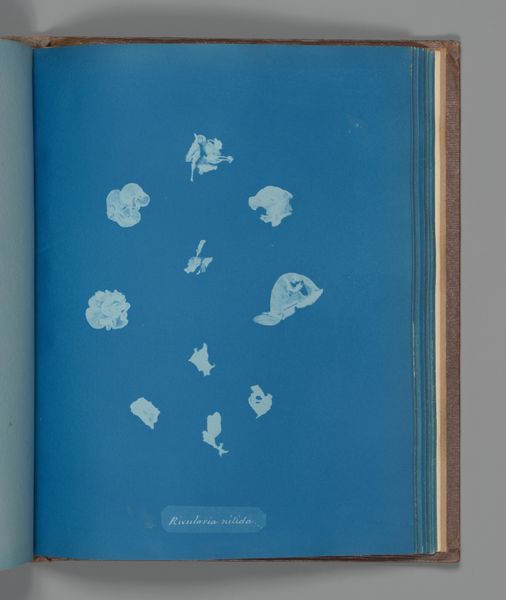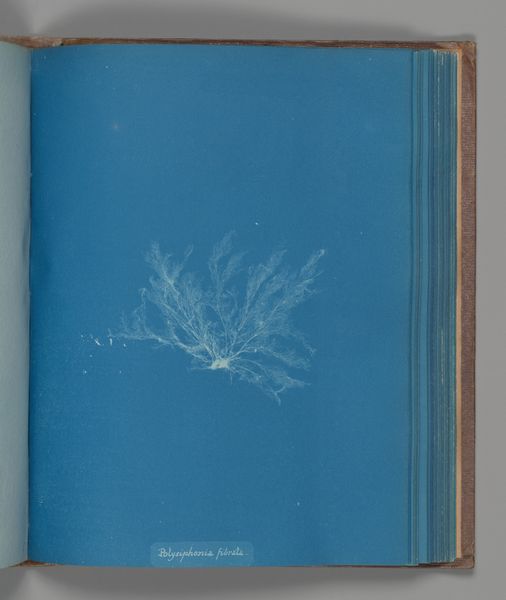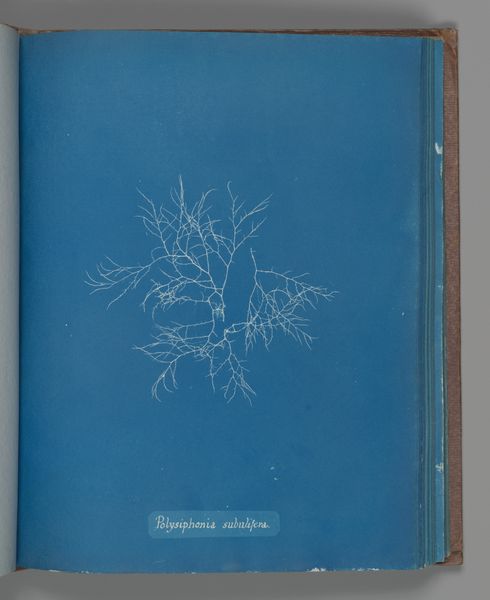
print, cyanotype, photography
#
16_19th-century
# print
#
cyanotype
#
photography
#
geometric
#
naturalism
Dimensions: Image: 25.3 x 20 cm (9 15/16 x 7 7/8 in.)
Copyright: Public Domain
Curator: Here we have Anna Atkins' cyanotype, "Batrachospermum alpestre," created between 1851 and 1855. It's a print, a photographic image showcasing algae. Editor: The vibrant Prussian blue immediately strikes me; it feels almost otherworldly, like looking at a celestial map with that delicate, branching form floating in the inky depths. Curator: It's quite beautiful, and crucial to understand it wasn't conceived as 'art' per se, but as scientific documentation. Atkins, a botanist, was using the cyanotype process – an early photographic technique – to create illustrations for her publications on British algae. It represents the convergence of science, art, and early photography, pushing against those boundaries. Her status as a woman scientist in Victorian England also deeply informed this work. Editor: The algae itself, though. Notice how it's almost skeletal, an abstracted rendering of nature. The stark white against the blue highlights its structure so intensely, it calls to mind images of deep-sea creatures, hinting at the hidden, complex ecosystems that thrived then just as they do today. There's a fragility in it, too – it’s a delicate record. Curator: Indeed. There's also the history of accessibility we need to account for: Atkins made these images available at a time when scientific illustrations were expensive and difficult to reproduce. This image offered more equitable access to this scientific knowledge, but that opportunity was still impacted by class, gender, and education. We can't remove this work from its history. Editor: And the symbolic potential! Water, algae, this incredible shade of blue, these all touch something deeper, an innate recognition of life and the fundamental structures that connect it, something archetypal about growth, hidden ecosystems and the beginnings of it all, especially with water being the symbolic birth. Curator: A very fair point; viewing the artwork in relationship to its place as both an artistic symbol and its historical time offers a full, enriched understanding. Editor: So many layers present themselves, even with this seemingly simple image! Curator: Precisely. We're able to reflect on these past connections as we keep moving forward.
Comments
No comments
Be the first to comment and join the conversation on the ultimate creative platform.
